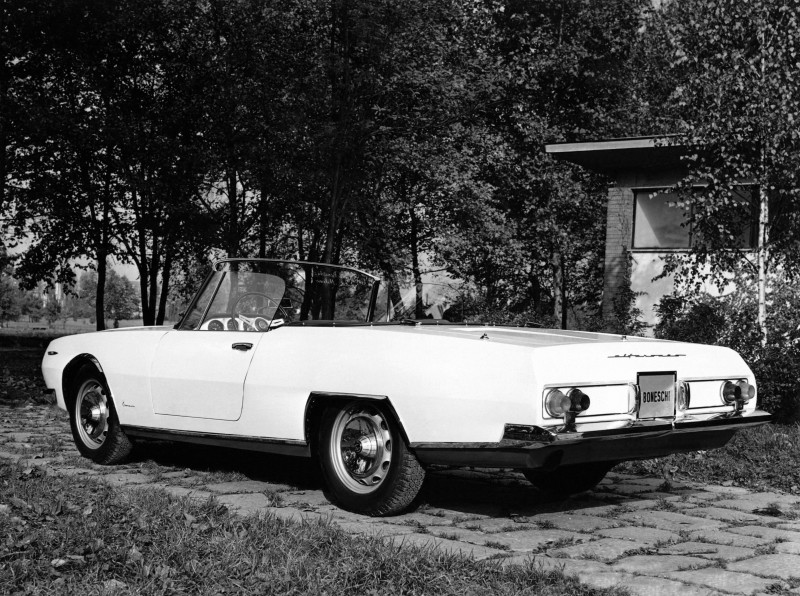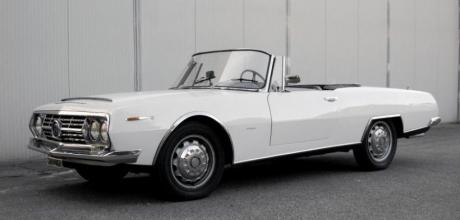1963 Alfa Romeo 2600 Cabriolet 'Studionove' Boneschi
What is it that makes an Alfa Romeo so instantly recognisable? It is, of course, the unmistakable ‘trilobo’ triangular front grille, which has adorned pretty much every car that ever came out of Milan (or Turin, for that matter). But not absolutely every one… And having looked at the car on this page, you might well wonder why it was left off. The trilobo grille adds so much character; the non-descript nose of the subject of this month’s Obscurati piece could have come from something bland and American – it certainly doesn’t scream ‘Alfa Romeo’.
OBSCURATI CURIOSITIES FROM THE AMAZING WORLD OF ITALIAN CARS
Boneschi’s straight-edged Alfa 2600 Spider
This car came from one of Italy’s lesser-known coachbuilders, Boneschi, which had been set up in 1919 by Giovanni Boneschi. From a base in Padova, the carrozzeria made special limousine bodies in its early years and then rebodied Fiat 1100s, Lancia Aprilias and Alfa Romeo 1900s in post-war years, plus novelty advertising vehicles.

Then in 1960, Boneschi teamed up with a designer called Rodolfo Bonetto. This ex-jazz drummer and self-taught stylist had some very firm design ideas. He was drawn by straight lines, typified in car design by the 1961 Lincoln Continental. In his own design language, he called this linea tesa (which can be translated as ‘razor edge’).
He was convinced that the swoopy car designs being presented at the time as “aerodynamic” were nothing of the sort and that his sharpedged approach was every bit as valid. Boneschi was persuaded to build a whole series of cars to Bonetto’s linea tesa process from 1960 onwards. These would include special bodies based on the Fiat 1500 S, Fiat 2100, Lancia Flaminia (badged Amalfi), Osca 1600 GT (Swift) and even Maserati 3500 (Tight).
We’re looking at the ninth (and final) of these razor-edge designs, which is why it had the name ‘Studionove’ (or ninth study) emblazoned on its flanks. Incidentally, Boneschi never made public Bonetto’s seventh and eighth designs – perhaps they were simply too controversial to be shown. The Studionove was based on the then-new Alfa Romeo 2600, as launched in March 1962.
Although Alfa offered its own 2600 Spider (designed by Carrozzeria Touring), Boneschi still thought it worthwhile to propose its own. It took delivery of chassis number 192742 on 6 September 1963 and had finished it by 26 October 1963 – a remarkable achievement considering it took a reported 3570 hours’ worth of work. The car received its public debut at the Turin Show of October 1963.
The design was certainly different. Its straight lines were – almost literally – cutting edge but in general it ended up looking boxy and heavy. It suffered from over-chroming and its rigidly squared-off rear wheelarches looked very odd considering its front arches were semi-circular. Perhaps the Studionove’s poor reception was one reason why the ‘folder paper’ school of design, promulgated by Giugiaro in the 1970s, took so long to get off the ground. If only the car’s proportions and detailing were better resolved, we might be looking back on this as the progenitor of a new styling trend.
As it was, Bonetto went back to industrial design, making a name for himself with avant garde furniture. For its part, Boneschi decided to focus its efforts on military vehicles, mobile TV studios and vans before being swallowed by rival Savio in 1995. Luckily the Studionove still exists today – not that you’d imagine an Alfa 2600 chassis lurks underneath.


